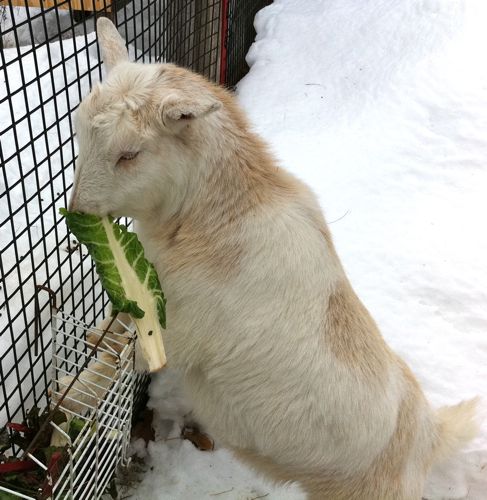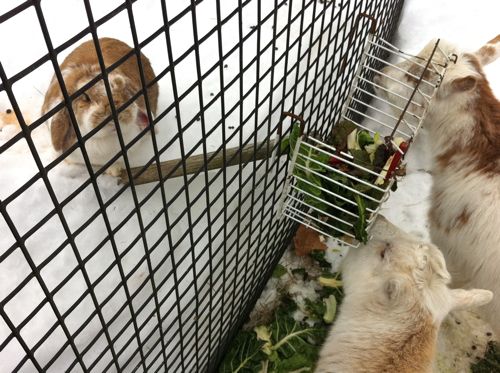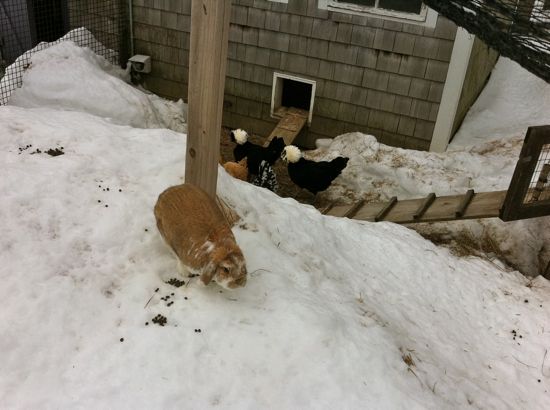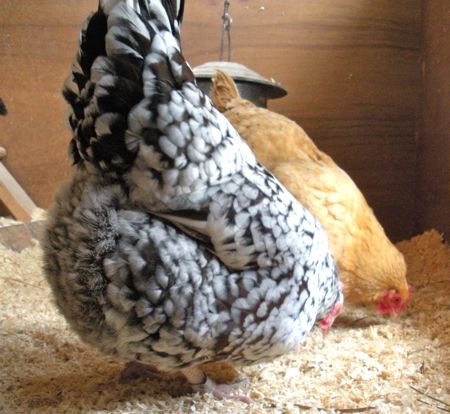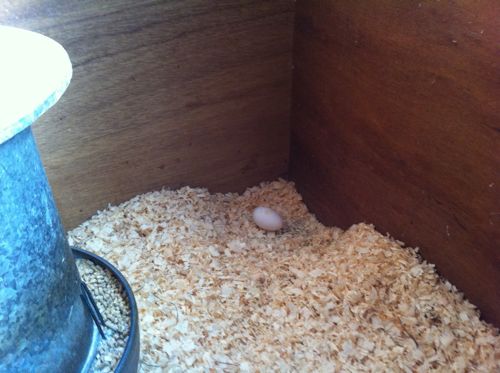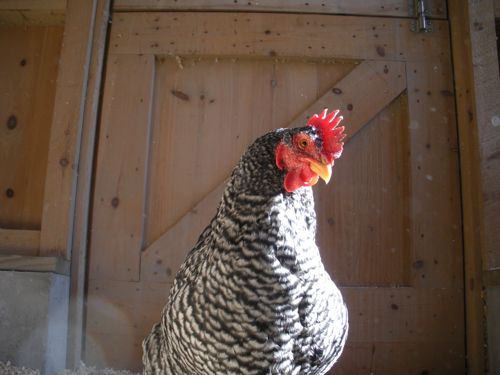I have several hens that will be seven years old this spring. That’s old, very old, for chickens. Although you might hear of a hen that lived to be thirteen, that’s the exception to the norm. I routinely read “chickens live to be eight to twelve years of age.” It’s like saying, “My grandmother lived to be 102, so all grandmothers live that long.” The real truth is that hens usually die much younger than that. As a chicken keeper, you can expect to lose birds to predators. Some chickens die in accidents; I had a chicken fall off a roost and break her neck. Chickens die from respiratory ailments. They mysteriously die around the age of three. They die from egg-laying screw-ups, like internal laying and prolapse. But, sometime, they skirt the dangers and make it into old age.
I currently have chickens that are elderly. Edwina, a Barred Rock, is a little stiff and slow, but she’s still scratching the ground, actively feeding, and maintaining her status in the flock. She hasn’t laid an egg for two years (since she was five) but she’s earned her retirement. Her sister, Eleanor, has not aged as gracefully, and has appeared to be at death’s door for over a year. I have to trim her nails because she doesn’t wear them down in the dirt – she spends most of her time lying in the sun. She walks like a person achy from arthritis.
This year I’ve had two older hens die. I’ve done necropsies. Inside, the birds were filled with tumors and enlarged and damaged ovaries. There are two common viruses that attack chickens that are known to cause tumors – Marek’s and lymphoid leukosis. To determine if either of these diseases were responsible, I recently had three birds blood tested. The results were inconclusive, but interesting. Blackie, a 7-year old Australorp who I’m sure is going to die any day now (but she keeps proving me wrong), was vaccinated as a chick for Marek’s. The Marek’s vaccine wears off after a few years, so that old hens who missed Marek’s as pullets can die of it when they are older. However, the blood test showed that Blackie remains free of that virus. The other two tested hens, who are younger and were purchased from breeders who don’t vaccinate, do have traces of Marek’s in their blood, but do not exhibit symptoms. Blackie does test positive for leukosis – as does one young hen, but not the other. These viruses are shed in fecal matter and feather dust. They’ll always be on my property. They’re ubiquitous and are probably on yours. What the blood tests show is that some birds will get the viruses and others won’t. It’s a matter of genetics, constitution and vaccination.
I’m not convinced that it was Marek’s or leukosis that did in my birds. There’s another possible culprit – adenocarcinoma. Adenocarcinomas are malignant tumors, also caused by viruses that chickens are prone to. In fact, one research paper stated “laying hens are subject to the spontaneous development of ovarian and oviductal adenocarcinomas.” A vet that looked at photos that I took of Petunia’s necropsy though that she had a diseased and ruptured ovary. It sounds like adenocarcinoma to me. These tumors are so prevalent that scientists studying human ovarian cancer use chickens in their research. A study in 2005 of 676 four-year old laying hens determined that 45% had tumors! 18% of those were adenocarcinomas.
In the end, I don’t know what specific virus is causing the tumors in my old hens. For my purposes, it doesn’t matter which one it is. Care and outcome is the same. However, I do want to do everything I can to keep the viruses at bay. Keeping the barn clean and swept of dust reduces the viral load in the environment. Caring for my chickens so that they are in optimal health helps them resist disease. Also, I’ll buy vaccinated chicks (which reduces incidence of Marek’s in young birds by 90%.)
Knowing how prevalent tumors are in older hens confirms how sensible the farming model is of keeping laying hens until the second molt, and then harvesting them for meat. After that, egg production isn’t high enough to be economically viable, and too many chickens wouldn’t be edible, even for the stew pot. If I was a real farmer, that’s what I’d do. But, I’m not “sensible” here at Little Pond Farm. Blackie and Eleanor look uncomfortable, but not in pain. They eat, they roost, they cluck their approval of special treats. These old hens will live out their days. And, maybe Edwina will make it to the chicken equivalent of 102.

